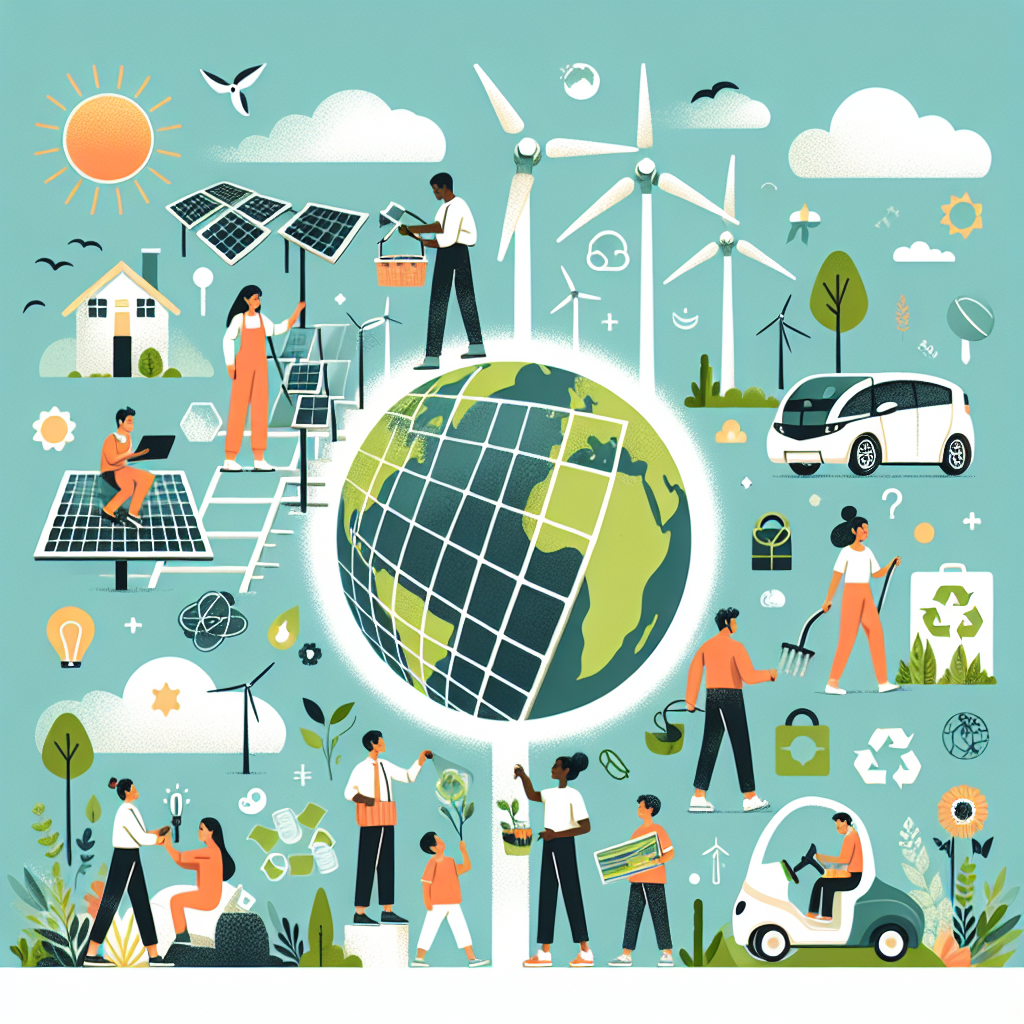The pressing need for sustainable technologies has never been more apparent. As climate change and environmental degradation continue to pose significant threats to our planet, innovation in sustainable technology offers a path toward a greener future. From renewable energy sources to eco-friendly transportation, these advancements promise to reduce our carbon footprint while fostering economic growth.
Renewable Energy Sources
One of the most significant pillars of sustainable technology is the development and deployment of renewable energy sources. Renewable energy not only reduces greenhouse gas emissions but also provides a sustainable and reliable power supply. Here are some of the most promising renewable energy innovations:
Solar Power
Solar power has emerged as a frontrunner in the renewable energy sector. Advances in photovoltaic cell technology have improved efficiency and reduced costs, making solar energy more accessible than ever before. Innovations such as solar panel roofing tiles and solar-powered desalination plants are transforming how we harness the sun\’s energy.
Wind Energy
Wind energy is another key player in the renewable energy arena. Modern wind turbines are more efficient, quieter, and less intrusive on wildlife. Offshore wind farms, in particular, are becoming an increasingly popular solution due to their ability to generate large amounts of energy without taking up valuable land space.
Hydropower
Hydropower, the production of electricity from flowing water, is one of the oldest and most reliable forms of renewable energy. Recent technological advancements, such as underwater turbines and improved energy storage systems, are enhancing the viability and sustainability of hydropower.
Eco-friendly Transportation
The transportation sector is one of the largest contributors to greenhouse gas emissions. Fortunately, sustainable technology is making significant strides in creating eco-friendly transportation options.
Electric Vehicles (EVs)
Electric vehicles have become a symbol of sustainable transportation. With zero tailpipe emissions, EVs significantly reduce the environmental impact of personal and public transport. Innovations in battery technology, such as solid-state batteries, are extending the range and reducing the charging time of EVs, making them more practical for everyday use.
Public Transportation
Improving the efficiency and sustainability of public transportation systems is crucial for reducing urban pollution. Electric buses, trams powered by renewable energy, and the development of high-speed rail networks are all contributing to greener public transport options. Additionally, the integration of smart technology in public transit systems is helping to optimize routes and reduce energy consumption.
Alternative Fuels
Research into alternative fuels, such as hydrogen and biofuels, is paving the way for more sustainable transportation solutions. Hydrogen fuel cells, for example, emit only water vapor and can be used in everything from cars to buses to trains. Biofuels, derived from organic materials, offer another renewable alternative to traditional fossil fuels.
Smart Cities
The concept of smart cities revolves around the use of technology to create sustainable, efficient, and livable urban environments. Here are some of the technologies driving this transformation:
Internet of Things (IoT)
The Internet of Things (IoT) plays a crucial role in the development of smart cities. By connecting devices and systems, IoT enables real-time monitoring and management of urban infrastructure, leading to improved energy efficiency, reduced waste, and enhanced quality of life for residents.
Smart Grids
Smart grids are revolutionizing the way we distribute and consume electricity. By using digital technology to manage the flow of electricity, smart grids can optimize energy usage, reduce outages, and integrate renewable energy sources more effectively. This results in a more resilient and sustainable power supply.
Green Building Technologies
Green building technologies are essential for constructing sustainable urban environments. Innovations such as energy-efficient HVAC systems, sustainable building materials, and green roofs are reducing the environmental impact of buildings. Moreover, smart building systems that monitor and adjust lighting, heating, and cooling in real-time are contributing to energy savings and enhanced comfort.
Waste Management and Recycling
Effective waste management and recycling are crucial components of sustainable technology. By minimizing waste and maximizing resource recovery, we can reduce our environmental footprint and create a more sustainable future.
Advanced Recycling Technologies
Advanced recycling technologies are making it easier to process and repurpose various types of waste. Innovations such as chemical recycling, which breaks down plastics into their basic components, and automated sorting systems that use AI to identify and separate recyclable materials are improving the efficiency and effectiveness of recycling efforts.
Waste-to-Energy
Waste-to-energy technologies convert waste materials into usable energy, such as electricity or heat. By diverting waste from landfills and reducing reliance on fossil fuels, these technologies are contributing to a more sustainable waste management system. Examples include anaerobic digestion, which produces biogas from organic waste, and incineration with advanced emission control systems.
Agricultural Innovations
Agriculture is another sector where sustainable technology is making a significant impact. By adopting innovative practices and technologies, we can ensure food security while minimizing environmental harm.
Precision Agriculture
Precision agriculture involves using technology to optimize farming practices. By employing drones, sensors, and data analytics, farmers can monitor crop health, soil conditions, and weather patterns in real-time. This allows for targeted interventions, reducing the need for water, fertilizers, and pesticides, thereby minimizing environmental impact.
Vertical Farming
Vertical farming is an innovative approach to agriculture that involves growing crops in stacked layers, often indoors. This method significantly reduces the land and water required for farming and can be implemented in urban areas. LED lighting technology and hydroponic or aeroponic systems are key components of successful vertical farms.
Conclusion
Sustainable technology holds the promise of a greener, healthier future for our planet. As innovation continues to drive advancements in renewable energy, eco-friendly transportation, smart cities, waste management, and agriculture, we move closer to achieving a sustainable balance between technological progress and environmental stewardship. By embracing these technologies and supporting further research and development, we can ensure a brighter, greener future for generations to come.

